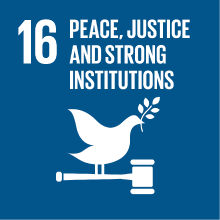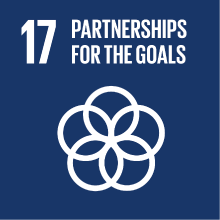DIGITAL HISTORY
- Academic year
- 2023/2024 Syllabus of previous years
- Official course title
- DIGITAL HISTORY
- Course code
- FM0491 (AF:448471 AR:257770)
- Teaching language
- English
- Modality
- Blended (on campus and online classes)
- ECTS credits
- 6
- Degree level
- Master's Degree Programme (DM270)
- Academic Discipline
- M-STO/04
- Period
- 1st Semester
- Course year
- 1
- Where
- VENEZIA
- Moodle
- Go to Moodle page
Contribution of the course to the overall degree programme goals
Expected learning outcomes
1. Identify and discuss the main techniques for decoding primary historical sources and encoding parsed information into machine-understandable systems.
2. Use information-gathering solutions and content management systems to visualise acquired information and simulate scenarios from a computational history perspective.
3. Generate interpretations and narratives around historical sources.
4. Develop a research practice and apply the acquired fundamental skills to a selected specimen.
5. Contribute to the learning environment by participating positively in-class discussions and presenting work clearly and cohesively.
Pre-requirements
Contents
• Reflections on Training Machine Learning Algorithms for the Next Generation of Historians.
• Towards a Computational Approach to History. The Principle of Computational Equivalence and the Phenomenon of Computational Irreducibility in Historical Sciences.
• Reloading the Treasure of Human Experiences into the Digital Time Machine
2. National Historiographies at the Computational Turn.
• Gazing at the World as Seen by the Others.
• Linguistic Obstacles: A New Tower of Babel?
• Computational Approaches as Tools to Overcome Cultural Barriers in the Historian’s Craft.
3. History, Films, and Online Video Streaming.
• Communicating History with Films.
• The Animated Picture is a Privileged Medium to Screen Historical Narratives in Films.
• Validating Historical Narratives in Films.
4. Students’ Projects:
• The Online System Engineering Historical Memory (EHM): Methods and Tools.
• Students are guided in the development of an online application on EHM.
• Students’ Presentations.
Referral texts
Cohen, Daniel J., & Roy Rosenzweig (2006). Digital History: A Guide to Gathering, Preserving, and Presenting the Past on the Web. Philadelphia: University of Pennsylvania Press. DOI: https://archive.org/details/digitalhistorygu0000cohe/page/n3/mode/2up
Graham, Shawn, Ian Milligan, & Scott Weingart (Eds.) (2016). Exploring Big Historical Data. The Historian’s Macroscope. London: Imperial College Press. DOI: https://doi.org/10.1142/p981
Tomasin, Lorenzo (2017). L’impronta digitale. Cultura umanistica e tecnologia. Rome: Carocci editore.
Nanetti, A. (2023) Computational Engineering of Historical Memories: With a Showcase on Afro-Eurasia (ca 1100-1500 CE). London UK and New York USA: Routledge. https://doi.org/10.4324/9781003310860
Articles
Bentley, Peter (2022). “Augmented Intelligence: What it is and why it will be smarter than AI.” BBC Science Focus Magazine (blog). February 1, 2022. DOI: https://www.sciencefocus.com/future-technology/augmented-intelligence
Bolo, Jacques (2016). “Umberto Eco and Artificial Intelligence.” Exergue, March. DOI: https://www.exergue.com/h/2016-03/tt/eco-perfect-lang.html
Gavin, Michael (2014). “Agent-based modeling and historical simulation.” Digital Humanities Quarterly, 8(4). DOI: http://www.digitalhumanities.org/dhq/vol/8/4/000195/000195.html
Luo, S. S., Shedd, B. A., & Nanetti, A. (2018). Enhancing the Experience of the Western Xia Imperial Tombs Heritage Site (PRC, Ningxia) through Animated Installations. SCIRES-IT (SCIentific RESearch and Information Technology), 8(1), 1-32. http://www.sciresit.it/article/view/12905
Nanetti, A., & Benvenuti, D. (2019). Animation of two-dimensional pictorial works into multipurpose three-dimensional objects. The Atlas of the Ships of the Known World depicted in the 1460 Fra Mauro’s mappa mundi as a showcase. SCIRES-IT (SCIentific RESearch and Information Technology), 9(2), 29-46. http://www.sciresit.it/article/view/13151
Nanetti, A. (2021). Defining Heritage Science. A Consilience Pathway to Treasuring the Complexity of Inheritable Human Experience through Historical Method, AI and ML, in «Complexity», vol. 2021, special issue on Tales of Two Societies: On the Complexity of the Coevolution between the Physical Space and the Cyber Space [selected as Annual Issue of the journal], edited by CHEN S.-H. (Lead Editor), S. Alfarano and D. Shen (Guest Editors), Article ID 4703820, 13 pages. https://www.hindawi.com/journals/complexity/2021/4703820/
Nanetti, A., Razdi, Z., & Benvenuti, D. (2021). Crafting the next generation of web-based learning tools for manuscript artefacts. A focus on science, technology, and engineering codices, world maps, and archival documents in exhibition settings, in «SCIRES-IT (SCIentific RESearch and Information Technology) », 11(1), 97-114. http://www.sciresit.it/article/view/13537
WEB PLATFORM
https://engineeringhistoricalmemory.com/
Assessment methods
- Continuous assessment (participation in class discussion of assigned readings, presentation of class project, peer review of class projects)
- Final exam (oral)
Type of exam
Teaching methods
• In-class discussion of assigned readings.
• In-class research activities that are instrumental to individual or group projects.
• Lectures based on case studies.
• Class participation in the discussion and interaction with the instructor and peers will enable students to develop assessment criteria for their own and their peers' projects.
Further information
2030 Agenda for Sustainable Development Goals
This subject deals with topics related to the macro-area "International cooperation" and contributes to the achievement of one or more goals of U. N. Agenda for Sustainable Development


